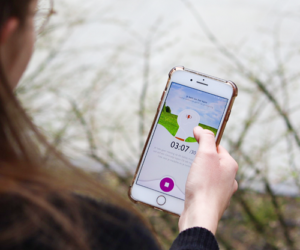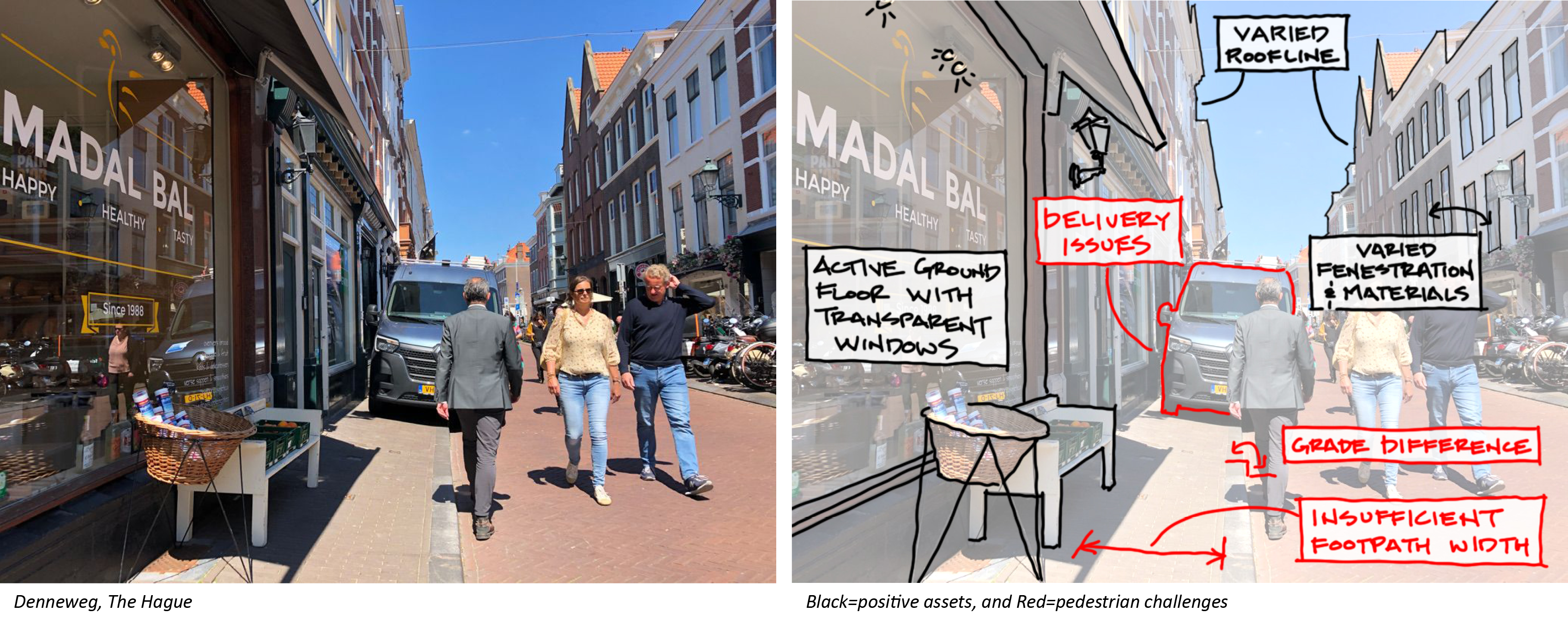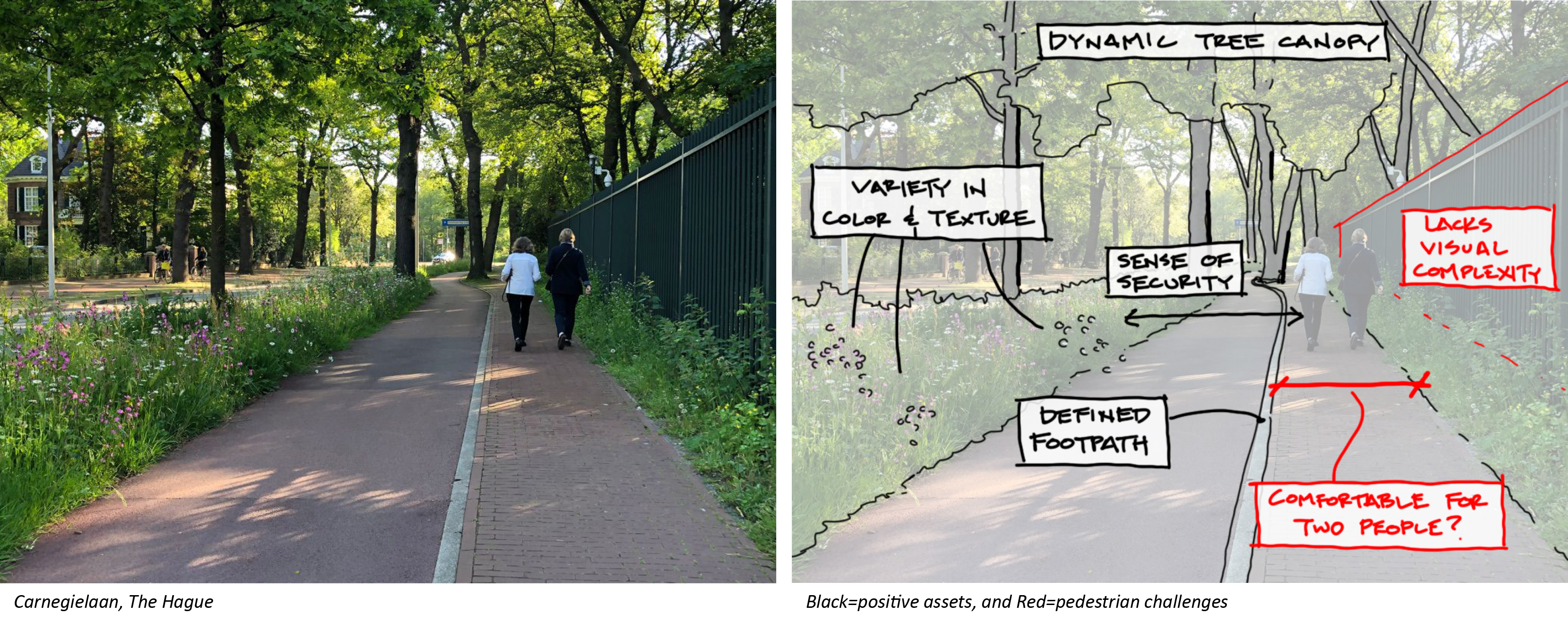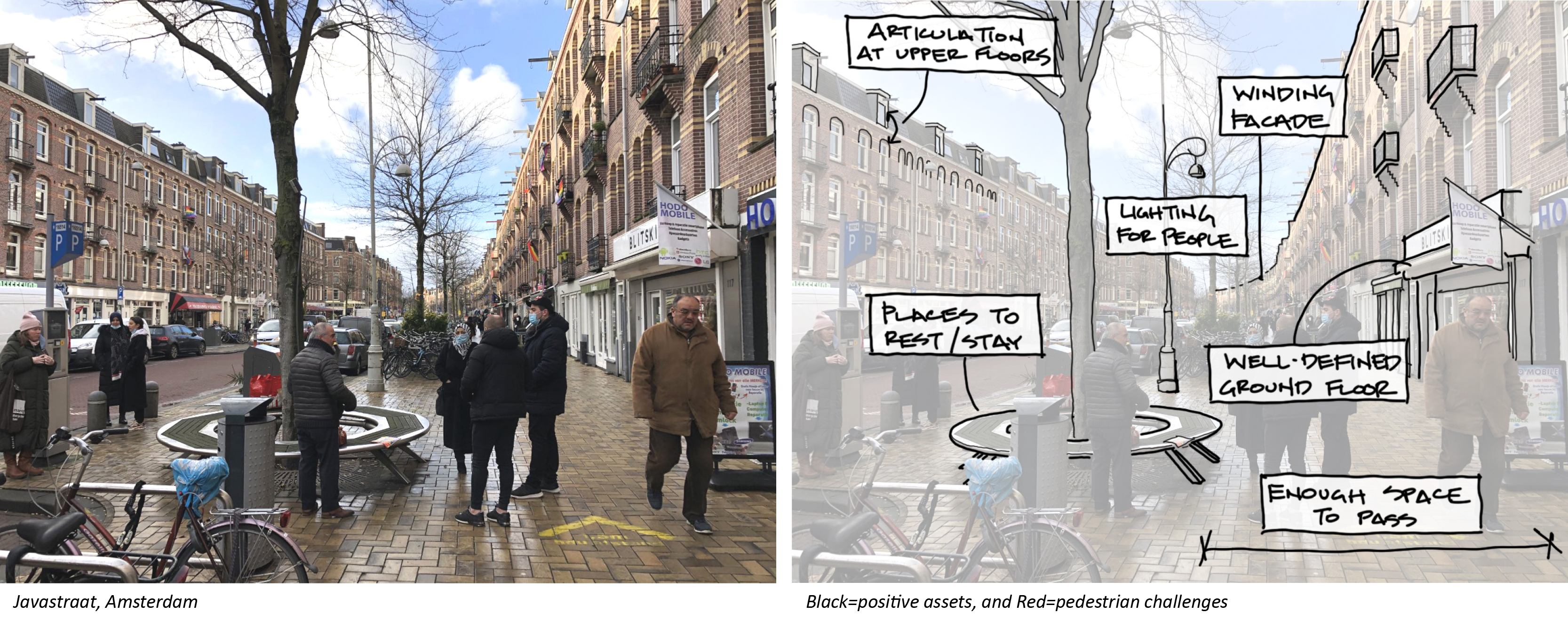Innovation / Pedestrians / Public Spaces / Walking
What makes a good ‘Ommetje’? Finding the joy of walking
 The team at Mobycon’s Dutch offices recently participated in a 2-month long walking challenge. During this heated (and friendly) competition between colleagues, we spent many days intentionally walking through the cold, wind and rain just to stay on pace with others who were moving up the leaderboard.
The team at Mobycon’s Dutch offices recently participated in a 2-month long walking challenge. During this heated (and friendly) competition between colleagues, we spent many days intentionally walking through the cold, wind and rain just to stay on pace with others who were moving up the leaderboard.
I have to admit, on some of the dreariest days during our rainy Dutch spring, it was nice to have the extra motivation to go outside for an ‘Ommetje’ (the name of the app we used for the competition, which translates to “detour” in English). During the challenge, the Ommetje app provided health facts after each detour. These explained how a daily walk can inspire a more creative, productive and healthy brain. While this was not new research to me, it got me thinking about the quality of one’s Ommetje, and how that relates to better health outcomes. In this post, I examine a few of my detours by analyzing the quality of the surrounding environment.
Different types of Ommetjes
Before we dive into my detours, it is worth mentioning that people choose walking routes based on a variety of factors. Some may favor efficiency and decide on a route that is most convenient or that gets them from one place to another in the straightest direction. Others, who are walking with children or have mobility impairments, may choose a route that meanders a bit more because it is clear of obstructions and/or has shorter intersection crossings. And finally, some of us are just open to a good wander and don’t approach the walk with any set plan. During my detours, I thought about how each environment either accommodates or fails to support these differing perspectives.
How the brain transmits information about our surroundings
The human brain makes decisions about ‘place’ in fractions of a second. You can test this out by looking at the two photos below and asking yourself where you’d prefer to walk.

Human bodies send 11 million bits per second—10 million of which are visual—to the brain for processing, but the conscious mind can only process 50 bits per second. This means that the unconscious mind handles many of our decisions about place and is reliant on the amount of visual stimulation. There is a common misconception that wide sidewalks are enough for a pedestrian to have a good experience while walking and this is normally due to a lack of visual stimulation, as demonstrated in the image on the right. Many people may have chosen that they’d prefer to walk in the environment pictured on the left—even in spite of the sidewalk being less wide and area feeling more congested. This is because it offers a dynamic environment that allows our eyes to wander left, right and even above, in search for a variety of details that make a space feel cozy. As I observed my surroundings during each Ommetje, I thought about how each environment appeals to our senses.
Ommetjes From The Netherlands
Planners, designers and engineers often think about street design in plan and section view. While these are helpful for communicating how to spatially arrange areas for pedestrians, cyclists, public transit and cars, these views fail to capture the experience one will have as they walk (or cycle) down the street. A pedestrian’s experience should always be assessed from eye level of the user—this can be somebody who is walking, cycling or rolling. For the purposes of this analysis, I’ve used the average height of an adult walking.

In the image above, I’ve examined a variety of architectural details that stimulate activity for the eye and brain. The quality of the built form sets up an enjoyable “room” for the pedestrian, but a lack of sidewalk space leaves pedestrians exposed to car traffic and having to transition between sidewalk and roadway level. This detour may be fine for the lone wander, but the environment is not sufficient for most of us who would like to walk with company or a stroller.

We consider a very different context in this image, which was taken near the Peace Palace in the Hague. The variety of heights, textures and colors of planting material allow the brain to stay active. In addition, the walking space is well-defined and enhanced by the color contrast between pavement and planting. Pedestrians may also feel an added layer of protection due to the planted buffer. This room only lacks complexity on one plane, which is due to the close proximity of the fence. For many this walking experience may rate quite nicely, but it could be improved by adding more visual stimulation in place of the fence and making sure the footpath is a comfortable width for people to walk side-by-side.

Similar to the first image from the Hague, the built form along Javastraat offers a variety of opportunities for the pedestrian’s eye to jump between architectural elements—from ground floor retail to alternating balconies, to a winding street façade. There are even greater visual stimuli when accounting for elements in the streetscape: street trees, seating and light fixtures. This dynamic environment is one of the reasons why people don’t think twice about how far they’ve walked when on a dynamic shopping street.
Holistic design is the path to a quality Ommetje
Given how much the human brain relies on visual stimulation to form impressions about our surroundings—and makes split-second decisions about whether to walk or not—designers need to think beyond the right-of-way when examining pedestrian facilities. Pedestrian comfort is not just about the width of a footpath, but it’s also influenced by the proximity of the building wall, size of windows, presence of planting and street trees, the location of other sidewalk furnishings and many other factors. When we think about the sidewalk as a three-dimensional room rather than a line on a map, it allows us to consider whether somebody would be comfortable making it part of their daily Ommetje.

Ryan Jacobson
Senior Urban Designer/Planner
r.jacobson@mobycon.com

